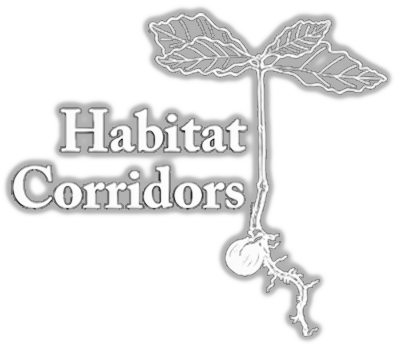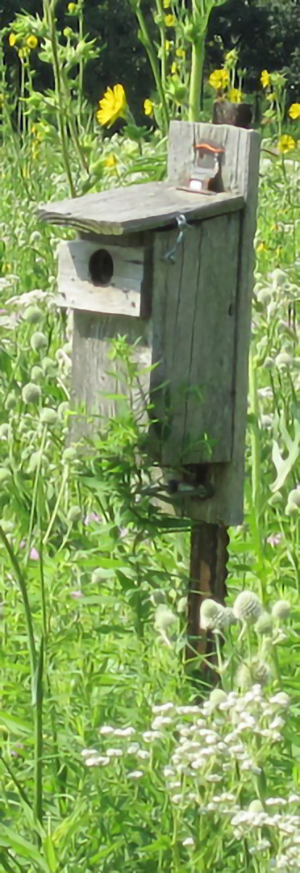Saving living space for living
things one yard at a time
Bluebird Houses
This spring consider helping our eastern bluebirds at your home. Among our most loved and easily recognized birds, males have vivid blue backs and warm reddish-brown breasts. Females are an elegant gray with blue-tinged wings. A small thrush with large eyes, plump body and a charmingly alert posture, its song is cheerful and melodious, and people don’t worry them.
Until recently, bluebird populations had been declining. In fact they were listed as a “species of special concern.” Man-made environmental changes have reduced their natural habitat as open spaces fill with rooftops, asphalt and woody species. Aggressive non-native birds like the European starling and the house sparrow out-compete it for nest holes.
Bluebirds have made a comeback thanks to the efforts of conservationists and bird lovers. Scientists have established best practices to sustain the species. You can find those practices at www.nabluebirdsociety.org. Luckily, the species has proven to be adaptable, and residents can support the birds by providing them with nest houses. They will support you in return by eating massive numbers of insects and by feeding even more to their young. It’s natural insect control free of charge!
A few years ago I bought a bluebird nest box, and a local bluebird enthusiast kindly came to my farm and installed it in an appropriate spot. I was lucky to have a bluebird pair nest in it during the first year. This year I’m going to establish a “bluebird trail” with neighbors at the back of my property along power lines. Last year while I was walking along those lines, I discovered that someone had created a “trail” of six bluebird boxes. I will continue the trail onto my property.
Consider putting a nest box in your yard and monitoring it. Monitoring takes a bit of time, but it’s great fun. When selecting a site, consider:
- Bluebirds prefer open habitats like farms, meadows, or cemeteries. They rarely nest in woods or cities.
- The nest box should be within fifty feet of a tree or other solitary perch. Adults will use it to scan for food, and young use the perch to avoid predators during their first flights.
- The box should be about five feet off the ground, facing away from prevailing winds and toward the “perch tree.”
- Locate the box away from woods, shrubs, or forest edges to avoid competition with house wrens. Also avoid competition with aggressive house sparrows. You may have to remove sparrow nests. Be patient and monitor.
- Tree swallows also compete with bluebirds for nest boxes. You can benefit both native species by placing two boxes near each other, about ten feet apart. Both birds are territorial with their own species but will tolerate being near each other.
- Do not use yard herbicides or other pesticides.
There are all kinds of bluebird nest box plans if you want to make your own box; they are often quite simple. There are also ready-made houses to purchase online or in local stores. Houses come with instructions and tips. Now is a good time to get started.

